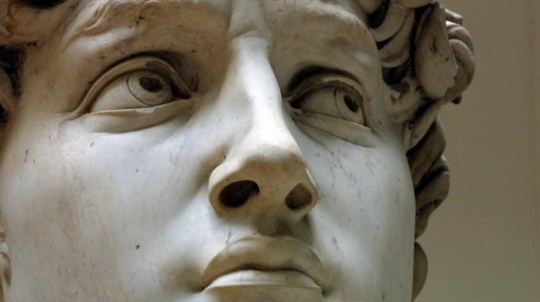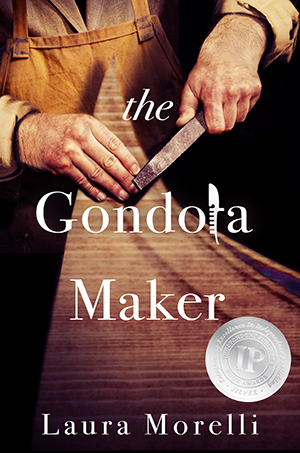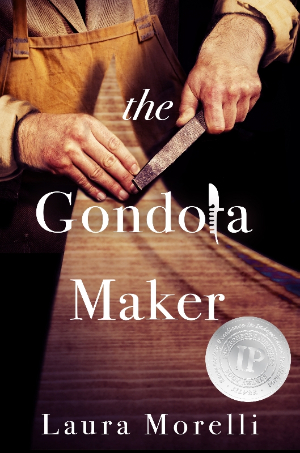Laura Morelli's Blog, page 3
October 3, 2016
“Bridge of Sighs” is Out!
My new short story, “Bridge of Sighs,” is finally here!
I’ve just hit “publish” on my latest short story, “Bridge of Sighs,” on Amazon.com, and it is now officially for sale in time for October. Hooray!
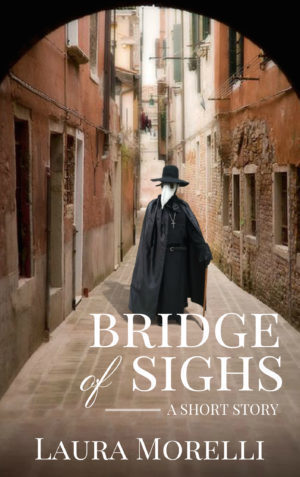
Venice, 1610: “ My uncle the goldsmith died less than an hour ago but the Plague Doctor is already at our door…”
After the bubonic plague takes his parents, ten-year-old Tonino is apprenticed to his uncle in a small goldsmith’s studio perched on a bridge. But as the Black Death reaches its hand into his uncle’s workshop, young Tonino is faced with making a choice to survive.
From the author of THE GONDOLA MAKER and MADE IN VENICE comes a short tale of pestilence, Venetian artisanship, and the will to live.
I hope you’ll be able to help me boost exposure for this new story. Here’s how you can help:
Go to Amazon.com or Amazon.co.uk. Type “bubonic plague” in the search bar under “Books” or “Kindle Books.” You should see “Bridge of Sighs” on the first page. Click on the book cover. If you don’t see the story right away, you can link directly to it here.
Buy “Bridge of Sighs.” It’s only 99 cents for a few more days in order to celebrate the launch. (And if you’re enrolled in Amazon’s Kindle Unlimited program, you can read it for free!)
Take advantage of the launch bonuses! Until October 15, I’m offering a second short story, “The Tapestry,” free to my readers. In addition, you can enter the special launch giveaway I’m running. On October 15 I’ll be drawing the name of the winner of ten paperback novels set in Venice, along with an authentic plague doctor mask handmade in Venice! The more you share the giveaway on social media, the higher your chances of winning.
I’ve long been fascinated by the plague doctor, a fixture of premodern medicine. You can read more about the history of the plague doctor mask here.
Pssst… Do you have your Halloween costume yet?
To be clear, you don’t have to buy “Bridge of Sighs” to enter the giveaway; instead you can enter the giveaway directly here. (But at 99 cents “Bridge of Sighs” is a steal and a great way to support me–thank you!)
Click here to get your copy of “Bridge of Sighs” on Amazon . The links to the giveaway and a free copy of “The Tapestry” are inside the ebook file.
As always, I am extremely grateful for everything you’re doing to support me and my work. Thank you in advance!
Have you read “Bridge of Sighs?” Drop a comment below. I love to hear your feedback!
.fusion-fullwidth-1 {
padding-left: 0px !important;
padding-right: 0px !important;
}
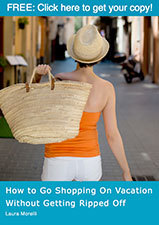 Join me!
Join me!Be the first to receive exclusive content, news, contests, and reader appreciation gifts. Sign up for my Reader’s Group and download a free copy of my guide, How to Go Shopping on Vacation Without Getting Ripped Off.
.fusion-button.button-1 .fusion-button-text, .fusion-button.button-1 i {color:#ffffff;}.fusion-button.button-1 {border-width:0px;border-color:#ffffff;}.fusion-button.button-1 .fusion-button-icon-divider{border-color:#ffffff;}.fusion-button.button-1:hover .fusion-button-text, .fusion-button.button-1:hover i,.fusion-button.button-1:focus .fusion-button-text, .fusion-button.button-1:focus i,.fusion-button.button-1:active .fusion-button-text, .fusion-button.button-1:active{color:#000000;}.fusion-button.button-1:hover, .fusion-button.button-1:focus, .fusion-button.button-1:active{border-width:0px;border-color:#000000;}.fusion-button.button-1:hover .fusion-button-icon-divider, .fusion-button.button-1:hover .fusion-button-icon-divider, .fusion-button.button-1:active .fusion-button-icon-divider{border-color:#000000;}.fusion-button.button-1{background: #dd9933;
background-image: -webkit-gradient( linear, left bottom, left top, from( #c97800 ), to( #dd9933 ) );
background-image: -webkit-linear-gradient( bottom, #c97800, #dd9933 );
background-image: -moz-linear-gradient( bottom, #c97800, #dd9933 );
background-image: -o-linear-gradient( bottom, #c97800, #dd9933 );
background-image: linear-gradient( to top, #c97800, #dd9933 );}.fusion-button.button-1:hover,.button-1:focus,.fusion-button.button-1:active{background: #c97800;
background-image: -webkit-gradient( linear, left bottom, left top, from( #dd9933 ), to( #c97800 ) );
background-image: -webkit-linear-gradient( bottom, #dd9933, #c97800 );
background-image: -moz-linear-gradient( bottom, #dd9933, #c97800 );
background-image: -o-linear-gradient( bottom, #dd9933, #c97800 );
background-image: linear-gradient( to top, #dd9933, #c97800 );}GET MY FREE BOOK.fusion-fullwidth-2 {
padding-left: 20px !important;
padding-right: 20px !important;
}Explore my books:
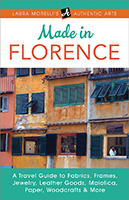
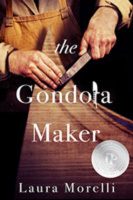
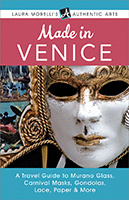
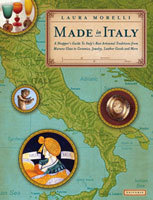
The post “Bridge of Sighs” is Out! appeared first on Laura Morelli: Art History, Art Historical Fiction, Authentic Travel.
September 15, 2016
Historical Novel Society 2016: Oxford, England
I’ve just returned home from a wonderful few days in the United Kingdom, where I attended the annual meeting of the Historical Novel Society. This event was fantastic on so many levels: the chance to explore Oxford; the opportunity to learn from my historical novelist colleagues; and the joy of hugging my friends in person–especially those I rarely see or have only met virtually. Here are just a few highlights of a fun-filled weekend:
Exploring Oxford
The town of Oxford took my breath away… The architecture is so impressive!
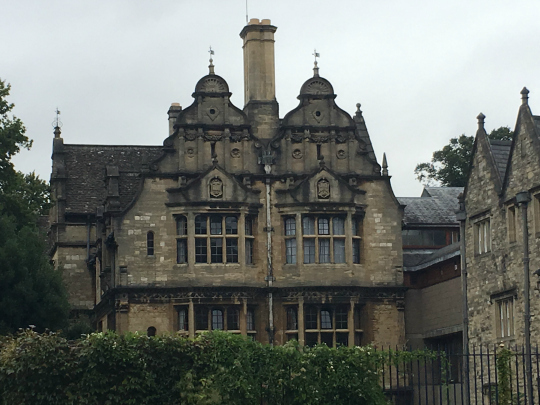
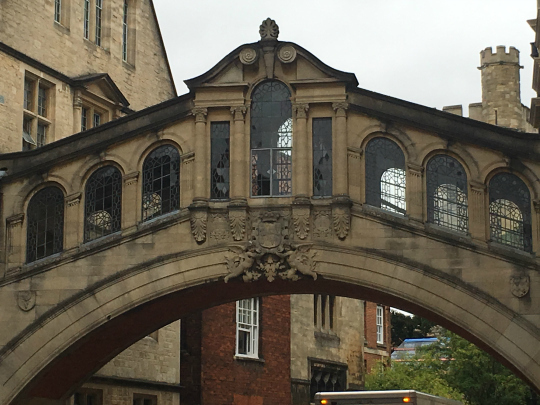
Oxford’s version of the Bridge of Sighs…
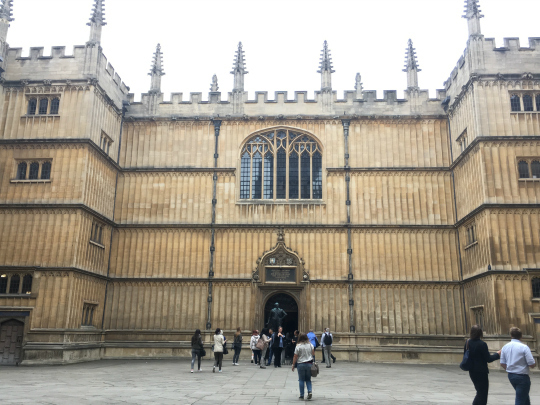
The entrance to the Bodleian Library
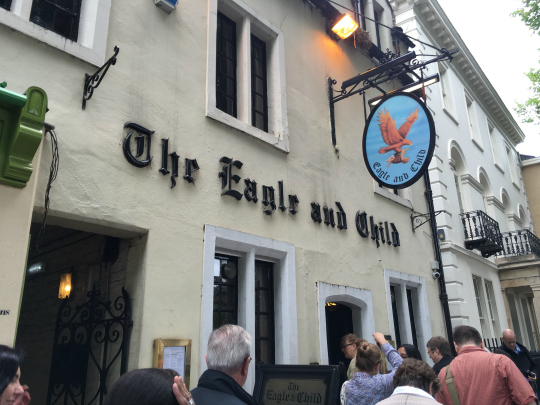
We had lunch at The Eagle and Child, a favorite haunt of C.S. Lewis and J.R.R. Tolkein, former Oxford residents and two of my all-time favorite authors.
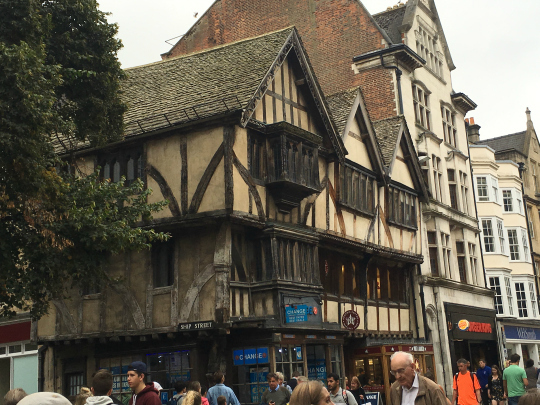

The Radcliffe Camera

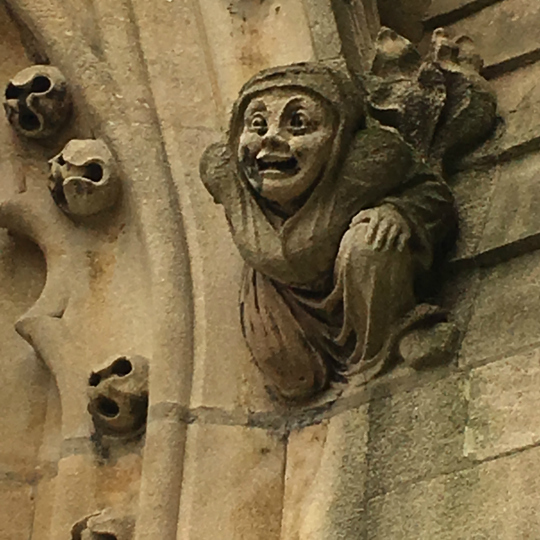
The Conference
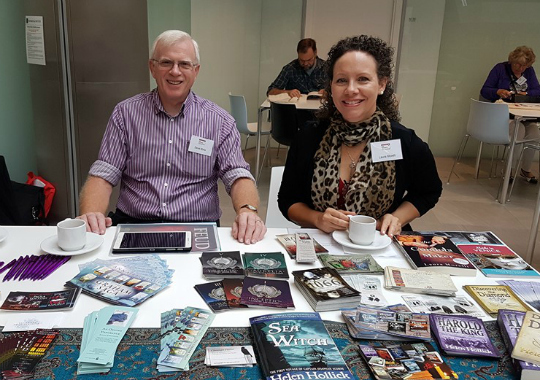
With fellow novelist Derek Birks
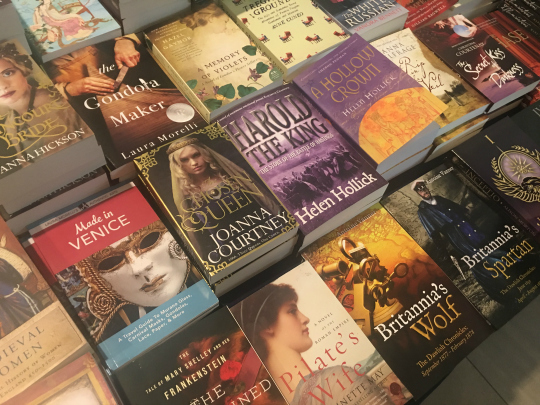
I wanted to devour all the books on the Blackwells’ sales table!
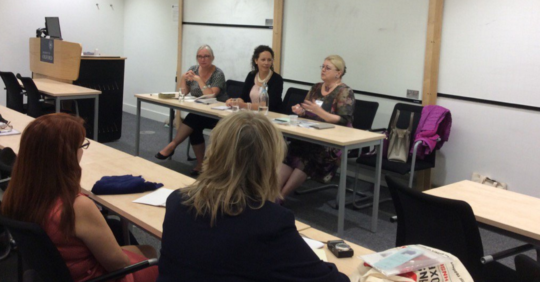
Carole Blake, Louise Rogers Lalaurie and I discussed how to sell foreign rights, plus the ins and outs of translation.
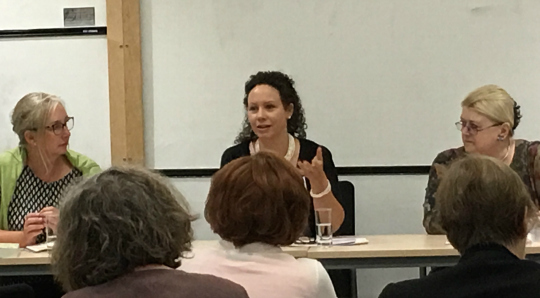
Speaking on the “Foreign Rights” panel with agent Carole Blake and translator Louise Rogers Lalaurie
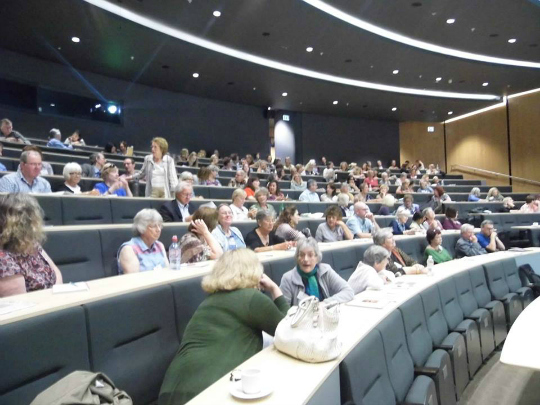
Our tribe! It was wonderful to spend a few days with like-minded people from both sides of the Atlantic.
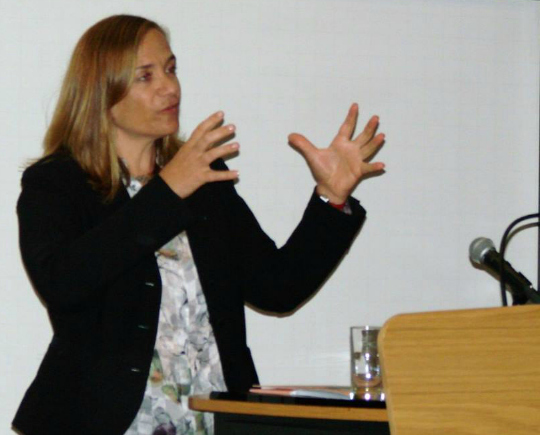
It was a thrill for me to meet Tracy Chevalier, one of the historical fiction authors I most admire.
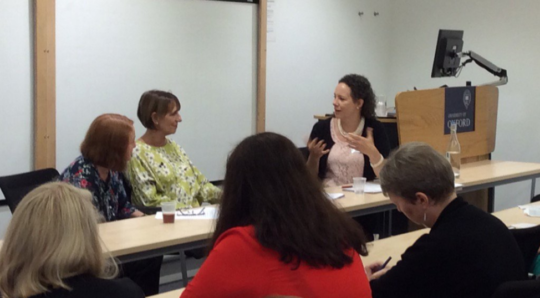
Authors Liz Harris, Karen Maitland, and I talk about writing about exotic locales.
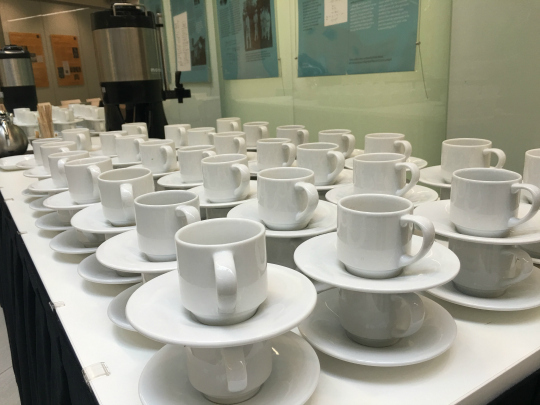
And… tea and biscuits were served pretty much all the time. What more is there to say?
The Bodleian Library
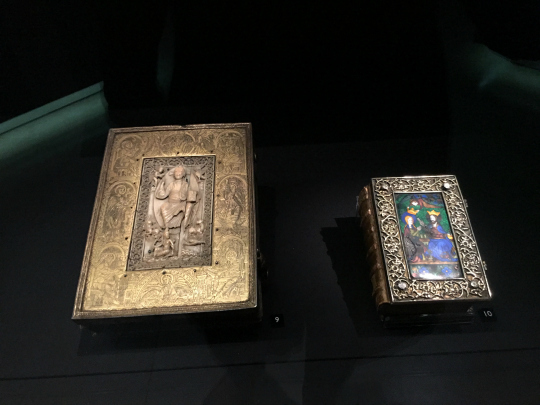
Soaking up medieval manuscripts at the Bodleian Library
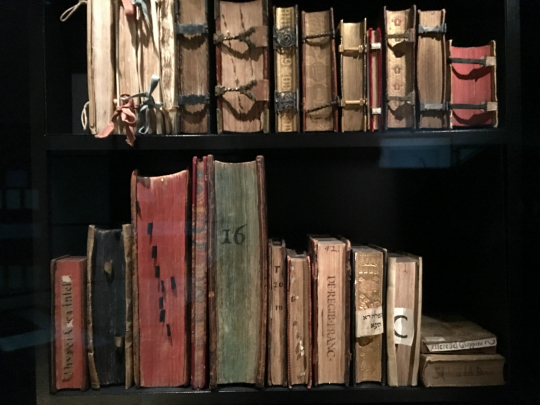
I wonder if they will just let me move in?

Look at this embroidered cover on a 16th-century English book!

A jeweled binding on a 12th-century German book
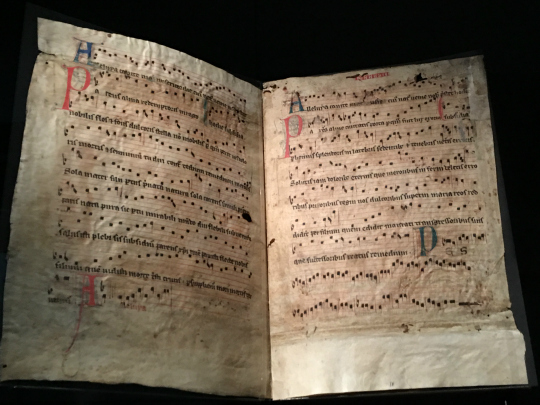
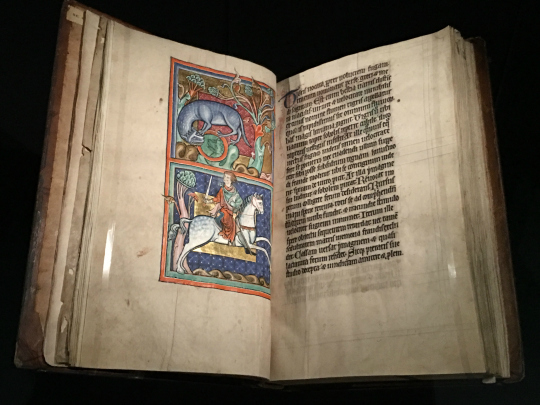
A medieval bestiary

Most important medieval records were sealed like this.
A Particular Type of Costume Party
Leave it to the historical novelists to come up with a very specific kind of costume party! Attendees were invited to come dressed as a character from a historical novel, even one of their own! Now put this into context. We writers are by and large introverts… for 364 days a year. On day 365, we come out of our caves, don ridiculous costumes, and parade across a stage in front of 300 people!

Author Margaret George as the brave Celtic warrior Boudica
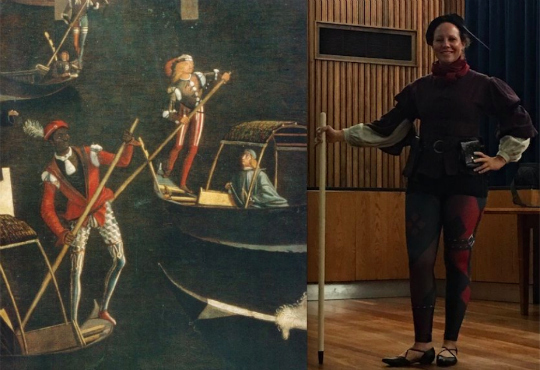
Cross-dressing isn’t part of my normal routine, but I played the role of a 15th-century gondolier for the costume pageant. And guess what? I won second place–ha ha! (Maybe I should do it more often?) Can you see the resemblance? (Vittore Carpaccio, Detail from the Miracles of the True Cross, ca. 1490, Gallerie dell’Accademia, Venice.)
Next year the HNS conference is in Portland, Oregon. What should I wear for next year’s costume pageant? Let me know your suggestions. Comment below!
The post Historical Novel Society 2016: Oxford, England appeared first on Laura Morelli: Art History, Art Historical Fiction, Authentic Travel.
Why I Write Art Historical Fiction
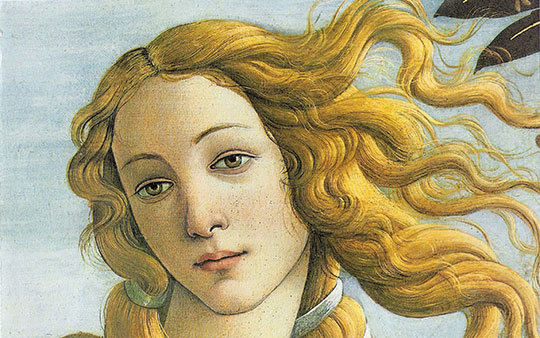
The first time I visited Venice as a wide-eyed teenager, I knew I was supposed to buy Murano glass, but I had no idea why. All I knew was that I was whisked to the famous “glass island” on an overcrowded, stinky boat. I waited behind two dozen American and Japanese tourists to pay an exorbitant price for a little glass fish—what a bewildering experience!
Still, it was the artistic traditions of the world that lured me back and inspired me to study the great artists of the past. Living in Europe and Latin America, I realized that in many places, centuries-old craft traditions are still living traditions. So began my quest to discover craftspeople passing on a special kind of knowledge to the next generation. I never tire of the stories and the people behind the world’s most enduring artistic traditions—everything from Murano glass to Limoges porcelain, balsamic vinegar, Chinese silk and cowboy boots.
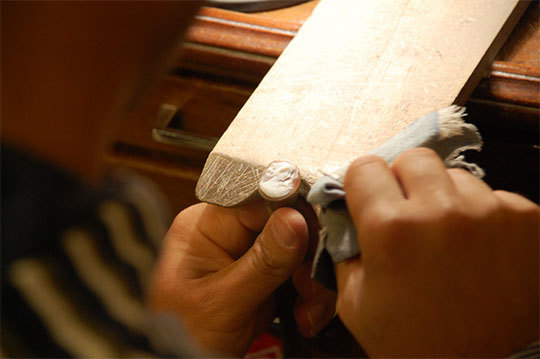
The story of The Gondola Maker, my first work of fiction, germinated inside my head while I was busy researching another book called Made in Italy. The contemporary Italian artisans I interviewed, one after another, told me how important it was to them to pass on the torch of tradition to the next generation. I began to wonder what would happen if the successor were not able or willing to take on that duty. The characters of the gondola maker and his heirs began to take shape. The story intrigued me so much that I felt compelled to write about it.
Working as an art historian involves three things: teaching, researching, and writing. Doing art historical research is a passion for me, and I also love being in the classroom and sharing the history of art with my students. Writing for scholarly journals takes years of training and discipline. I have great respect for the craftsmanship of academic writing and for those who practice it. However, personally, after writing within the conventions of academic scholarship for some years, I began to feel like I was going to burst!
One day I found myself yawning in the audience of a scholarly conference, and I realized that there was something fundamentally wrong. After all, the history of art is the most fascinating topic in the world! Why do we scholars insist on making it dull and inaccessible? I realized then that, not only did I see an opportunity, I felt called to share the excitement of art history with a broader audience through my writing.
What draws you to art historical fiction? Drop a comment below. I love to hear your feedback!
.fusion-fullwidth-1 {
padding-left: 0px !important;
padding-right: 0px !important;
}
 Join me!
Join me!Be the first to receive exclusive content, news, contests, and reader appreciation gifts. Sign up for my Reader’s Group and download a free copy of my guide, How to Go Shopping on Vacation Without Getting Ripped Off.
.fusion-button.button-1 .fusion-button-text, .fusion-button.button-1 i {color:#ffffff;}.fusion-button.button-1 {border-width:0px;border-color:#ffffff;}.fusion-button.button-1 .fusion-button-icon-divider{border-color:#ffffff;}.fusion-button.button-1:hover .fusion-button-text, .fusion-button.button-1:hover i,.fusion-button.button-1:focus .fusion-button-text, .fusion-button.button-1:focus i,.fusion-button.button-1:active .fusion-button-text, .fusion-button.button-1:active{color:#000000;}.fusion-button.button-1:hover, .fusion-button.button-1:focus, .fusion-button.button-1:active{border-width:0px;border-color:#000000;}.fusion-button.button-1:hover .fusion-button-icon-divider, .fusion-button.button-1:hover .fusion-button-icon-divider, .fusion-button.button-1:active .fusion-button-icon-divider{border-color:#000000;}.fusion-button.button-1{background: #dd9933;
background-image: -webkit-gradient( linear, left bottom, left top, from( #c97800 ), to( #dd9933 ) );
background-image: -webkit-linear-gradient( bottom, #c97800, #dd9933 );
background-image: -moz-linear-gradient( bottom, #c97800, #dd9933 );
background-image: -o-linear-gradient( bottom, #c97800, #dd9933 );
background-image: linear-gradient( to top, #c97800, #dd9933 );}.fusion-button.button-1:hover,.button-1:focus,.fusion-button.button-1:active{background: #c97800;
background-image: -webkit-gradient( linear, left bottom, left top, from( #dd9933 ), to( #c97800 ) );
background-image: -webkit-linear-gradient( bottom, #dd9933, #c97800 );
background-image: -moz-linear-gradient( bottom, #dd9933, #c97800 );
background-image: -o-linear-gradient( bottom, #dd9933, #c97800 );
background-image: linear-gradient( to top, #dd9933, #c97800 );}.fusion-button.button-1{width:auto;}GET MY FREE BOOK.fusion-fullwidth-2 {
padding-left: 20px !important;
padding-right: 20px !important;
}Explore my books:



 Learn more about Laura Morelli’s Authentic Arts guidebook series.
Learn more about Laura Morelli’s Authentic Arts guidebook series.
The post Why I Write Art Historical Fiction appeared first on Laura Morelli: Art History, Art Historical Fiction, Authentic Travel.
Carrara Marble: Art & History
“The more the marble wastes, the more the statue grows,” wrote Michelangelo Buonarroti. The Renaissance master was intimately familiar with the marble quarries near Carrara, in Tuscany, where he traveled to select raw materials for his famous Pietà and other sculptures. Every piece of Carrara marble was special and specific to each project. The block used for Michelangelo’s famous David had languished in the work yard of Florence cathedral for forty years before he tackled it; legend holds that the artist had in mind one of the hulking Carrara stonecutters as the physical model for Il Gigante. The master wrote that he dreamt of one day carving another colossus like the David—this time using an entire mountain of marble, a kind of Renaissance Mount Rushmore—that would overlook the sea.
Ancient origins
The Carrara quarries have provided artistic inspiration and raw materials since antiquity. For two thousand years, men have plundered the Apuan Alps near Carrara for the precious translucent white marble. The ancient Romans chopped fissures into the stone, then inserted wet wood that, when it expanded, caused the marble to break off in giant pieces. Their mode of getting it down the mountain—a sled-like contraption on a wooden track—was used through the twentieth century. Quarries of the ancient period as well as the ones Michelangelo used are still visible today. A visit to the Marble Museum of Carrara provides an informative background before taking a walk into the hills.
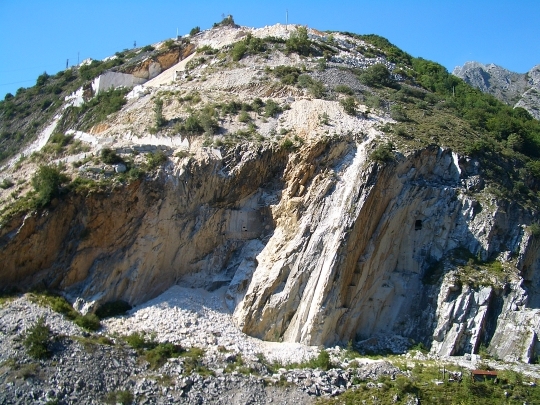
Beyond sculpture
Sculpture is not the only fruit of the Carrara quarries. Artisans in and around Florence have turned the craft of marble inlay into a high art. Inlaid stone was the passion of Grand Duke Ferdinand de Medici, who founded and endowed a workshop for this craft in 1588. This highly specialized technique involves inlaying marble and colored semiprecious stones valued for their brilliance and saturated color into furniture and wooden panels. The technique is sometimes referred to as pietre dure, commesso or opera di commessi, and is closely allied to mosaic. Today, this painstaking art remains in the hands of a few Florentine artisans. The small Museum of Inlaid Stone in Florence is a great place to feast your eyes on a vast array of decorated tabletops, plaques, and other works inlaid with intricate designs that can only be called “painting with stone.”
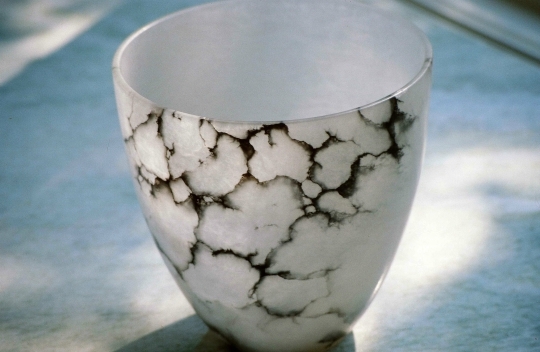
Alabaster of Volterra (c) Laura Morelli
Beyond Florence in the Tuscan countryside, other materials are also quarried for works of art. The ancient Etruscan city of Volterra is a center for working alabaster (technically, alabaster is a mineral, not a stone) and its local alabaster museum is a must-see before browsing the streets where luminous alabaster works fill the shop windows.
Modern masters
Today, the skills and techniques of working marble and other quarried stones and minerals are still passed down verbally from master to student, involving many years of practice. The Tuscan town of Pietrasanta is currently a mecca for marble sculptors, drawing masters from around the world who want to walk in the footsteps of Michelangelo. Strewn around their dust-filled studios are full-sized reproductions of the masterpieces of Renaissance masters, ancient Roman athletes, busts of royalty, and countless other treasures. Sculptors in training practice in a host of related disciplines such as model casting that are wonderful to observe. Call the studios ahead to arrange a visit to watch them work.
What’s your favorite thing made of Carrara marble? Drop a comment below. I love to hear your feedback!
 [/fusion_text].fusion-fullwidth-3 {
[/fusion_text].fusion-fullwidth-3 {
padding-left: 0px !important;
padding-right: 0px !important;
}  Join me!
Join me!
Be the first to receive exclusive content, news, contests, and reader appreciation gifts. Sign up for my Reader’s Group and download a free copy of my guide, How to Go Shopping on Vacation Without Getting Ripped Off.
.fusion-button.button-2 .fusion-button-text, .fusion-button.button-2 i {color:#ffffff;}.fusion-button.button-2 {border-width:0px;border-color:#ffffff;}.fusion-button.button-2 .fusion-button-icon-divider{border-color:#ffffff;}.fusion-button.button-2:hover .fusion-button-text, .fusion-button.button-2:hover i,.fusion-button.button-2:focus .fusion-button-text, .fusion-button.button-2:focus i,.fusion-button.button-2:active .fusion-button-text, .fusion-button.button-2:active{color:#000000;}.fusion-button.button-2:hover, .fusion-button.button-2:focus, .fusion-button.button-2:active{border-width:0px;border-color:#000000;}.fusion-button.button-2:hover .fusion-button-icon-divider, .fusion-button.button-2:hover .fusion-button-icon-divider, .fusion-button.button-2:active .fusion-button-icon-divider{border-color:#000000;}.fusion-button.button-2{background: #dd9933;
background-image: -webkit-gradient( linear, left bottom, left top, from( #c97800 ), to( #dd9933 ) );
background-image: -webkit-linear-gradient( bottom, #c97800, #dd9933 );
background-image: -moz-linear-gradient( bottom, #c97800, #dd9933 );
background-image: -o-linear-gradient( bottom, #c97800, #dd9933 );
background-image: linear-gradient( to top, #c97800, #dd9933 );}.fusion-button.button-2:hover,.button-2:focus,.fusion-button.button-2:active{background: #c97800;
background-image: -webkit-gradient( linear, left bottom, left top, from( #dd9933 ), to( #c97800 ) );
background-image: -webkit-linear-gradient( bottom, #dd9933, #c97800 );
background-image: -moz-linear-gradient( bottom, #dd9933, #c97800 );
background-image: -o-linear-gradient( bottom, #dd9933, #c97800 );
background-image: linear-gradient( to top, #dd9933, #c97800 );}.fusion-button.button-2{width:auto;}GET MY FREE BOOK.fusion-fullwidth-4 {
padding-left: 20px !important;
padding-right: 20px !important;
}Explore my books:




Learn more about Laura Morelli’s Authentic Arts guidebook series.
The post Carrara Marble: Art & History appeared first on Laura Morelli: Art History, Art Historical Fiction, Authentic Travel.
August 15, 2016
The Doors of Florence
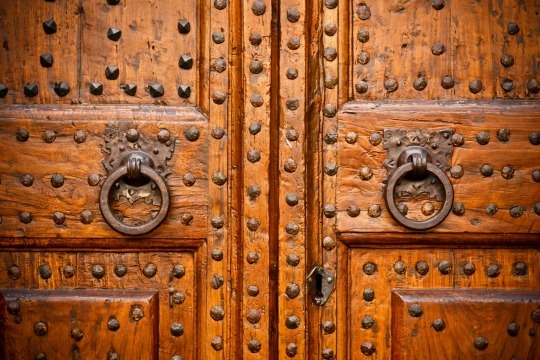
Some of the most impressive examples of Florentine woodwork are reserved for doorways, so keep your eyes open for these breathtaking works of art. Most visitors will be led to Lorenzo Ghiberti’s famous bronze doors of the Cathedral Baptistery. However, even some of Florence’s most modest wooden doors leading to homes or businesses might be elaborately carved, then ornamented with beautifully crafted hinges, locks, doorknobs, doorknockers, and studs of bronze or iron.
Every church in the city boasts beautiful doors that usually incorporate masterful works of wood and metal. In my opinion, though, some of the most amazing doors in Florence are those that once secured the city walls, and led from one quarter of the city to another. The wooden doors of the old Porta Romana and the Porta San Frediano, for example, stand some ten times the height of a grown man, and incorporate carved wooden panels, giant metal bolts, and impregnable-looking locks.
When you travel, do you pay attention to architectural details? Have you discovered any great doors in your own travels? Drop a comment below. I love to hear your stories!
.fusion-fullwidth-1 {
padding-left: 0px !important;
padding-right: 0px !important;
}
 Join me!
Join me!Be the first to receive exclusive content, news, contests, and reader appreciation gifts.
.fusion-button.button-1 .fusion-button-text, .fusion-button.button-1 i {color:#ffffff;}.fusion-button.button-1 {border-width:0px;border-color:#ffffff;}.fusion-button.button-1 .fusion-button-icon-divider{border-color:#ffffff;}.fusion-button.button-1:hover .fusion-button-text, .fusion-button.button-1:hover i,.fusion-button.button-1:focus .fusion-button-text, .fusion-button.button-1:focus i,.fusion-button.button-1:active .fusion-button-text, .fusion-button.button-1:active{color:#000000;}.fusion-button.button-1:hover, .fusion-button.button-1:focus, .fusion-button.button-1:active{border-width:0px;border-color:#000000;}.fusion-button.button-1:hover .fusion-button-icon-divider, .fusion-button.button-1:hover .fusion-button-icon-divider, .fusion-button.button-1:active .fusion-button-icon-divider{border-color:#000000;}.fusion-button.button-1{background: #dd9933;
background-image: -webkit-gradient( linear, left bottom, left top, from( #c97800 ), to( #dd9933 ) );
background-image: -webkit-linear-gradient( bottom, #c97800, #dd9933 );
background-image: -moz-linear-gradient( bottom, #c97800, #dd9933 );
background-image: -o-linear-gradient( bottom, #c97800, #dd9933 );
background-image: linear-gradient( to top, #c97800, #dd9933 );}.fusion-button.button-1:hover,.button-1:focus,.fusion-button.button-1:active{background: #c97800;
background-image: -webkit-gradient( linear, left bottom, left top, from( #dd9933 ), to( #c97800 ) );
background-image: -webkit-linear-gradient( bottom, #dd9933, #c97800 );
background-image: -moz-linear-gradient( bottom, #dd9933, #c97800 );
background-image: -o-linear-gradient( bottom, #dd9933, #c97800 );
background-image: linear-gradient( to top, #dd9933, #c97800 );}.fusion-button.button-1{width:auto;}GET MY FREE BOOK.fusion-fullwidth-2 {
padding-left: 20px !important;
padding-right: 20px !important;
}Explore my books:

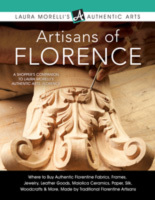
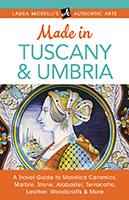
 Learn more about Laura Morelli’s Authentic Arts guidebook series.
Learn more about Laura Morelli’s Authentic Arts guidebook series. The post The Doors of Florence appeared first on Laura Morelli: Art History, Art Historical Fiction, Authentic Travel.
July 17, 2016
Which book cover do you like best?
padding-left: px !important;
padding-right: px !important;
}
Happy summer, friends! I’ve been busy this summer revising drafts of a new novel. I’m so excited to share a little bit about it. Also, I need your help!
The Painter’s Apprentice
A tale of forbidden love, family secrets, and the transformative power of art

“I am scraping golden flakes from my palette knife when I get the news that the pestilence has reached the quarter of our Most Serene City where my father’s workshop lies.”
In 1510, the daughter of a gilder is apprenticed to one of the most renowned painters in Venice. But as the plague begins to ravage the city, a devastating secret threatens to unravel everything she holds dear: her work, her family, and the man she loves. While the future of her family hangs in the balance, the painter’s apprentice must decide if she is willing to risk everything to follow her passions.
The Painter’s Apprentice is a prequel to The Gondola Maker, my award-winning historical novel set in 1581 Venice.
My wonderful cover artist Kerry has been working on a couple of different concepts for the book cover. Before finalizing a design, I would love your feedback!
Which book cover do you like best?
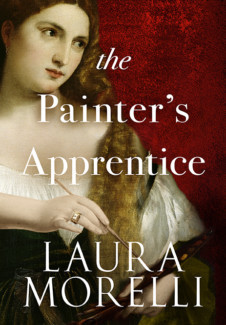
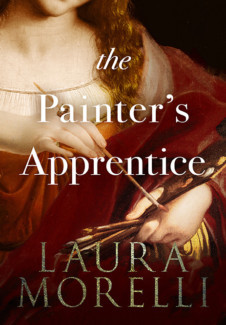
Comment below! Which book cover do you like best and why?
I am so grateful for your feedback. Thank you, friends!

The post Which book cover do you like best? appeared first on Laura Morelli: Art History, Art Historical Fiction, Authentic Travel.
July 15, 2016
The history of picture frames
Where did picture frames come from? Most people have never thought about the history of picture frames.
Throughout the Middle Ages, central Italian artists painted on wooden panels, not on canvas. Thirteenth-century documents describe the construction and preparation of these wooden panels with linen and gesso. Many elaborate panel paintings were religious scenes destined for ecclesiastical patrons, but sometimes, individual patrons also commissioned multimedia works for private chapels or domestic spaces.

Master of the Codex of Saint George: The Crucifixion. 14th-century Italian panel painting. Metropolitan Museum of Art, New York (61.200.1) .
Complex wooden forms
Carpenters played a key role in preparing the wooden armatures of panel paintings, as the wooden forms were not considered separate like a frame would later be, but rather an integral part of the paintings themselves. Woodworkers of the 1200s and 1300s constructed elaborate architectural shapes for multi-paneled paintings called diptychs, triptychs, and polyptychs, depending on the number of individual panels. These complex wooden forms were often based on Gothic architectural models, sometimes involving ornate forms, and layers of wood glued and nailed together. Larger pieces included battens on the back to prevent them from warping in humid environments, while very large works might be assembled on site. Once the wooden armature was complete, a layer of linen would be pasted down, then covered in gesso to ensure a uniform surface. Painters then painted and gilded these works according to their commission.
Today, you can view works by Tuscan master panel painters like Cimabue and Duccio in the Uffizi Gallery, as well as important works in the churches of Santa Trinita and Santa Maria Novella. While the painters themselves receive credit for their works, most of the carpenters who constructed these elaborate wooden forms usually go unnamed.

Where did picture frames come from?
So how did the frame become a separate entity apart from a painting? The Florentine Renaissance ushered in the idea of a frame as separate from a painted work, and Florence stood at the epicenter of this transition. In 1423, Palla Strozzi, a banker and at one time the richest man in Florence, commissioned Gentile da Fabriano, a painter who had spent most of his career in Venice, to paint a version of the Adoration of the Magi. The gilded panel painting was based on the medieval prototype of an architectural framework, but for the first time, the frame ended up as a separate elaboration from the painting. Over the next decade, other prominent Florentine artists, including Brunelleschi, Donatello, and Michelozzo, contributed to the development of the idea of a frame as a separate work in its own right. As a more classical aesthetic supplanted the Gothic style as the prevailing fashion, frames were a natural outcome.
While painters earned fame and fortune for their works and frame-makers remained largely anonymous, these early frames nonetheless constituted works of extraordinary accomplishment. Frame-makers displayed a remarkable sensitivity to the specific properties of each type of wood. Walnut was prized for its rich color and structural integrity, and was preferred for a frame with fine details, or one that was left to show the wood grain. More inexpensive and softer woods like pine and poplar might be used for less important parts of the frame, less intricate carving, or for areas that would be gilded or painted later in the process.
Florentine fashions
Although Florentines used a cassetta or “box”-style frame that was the same on all four sides, they also made a tabernacle-style frame with an elaborated top and bottom section, as well as the tondo, or round frame, popular throughout Tuscany during the Renaissance. Florentine woodworkers drew from classical architecture, vegetal forms, and the decorative vocabulary they already used in carving panels, chests, and other works for interior design.
Have you ever thought about the history of frames as separate from the history of art? Have you discovered any great frames in your own travels? Drop a comment below. I love to hear your stories!
.fusion-fullwidth-1 {
padding-left: 0px !important;
padding-right: 0px !important;
}
 Join me!
Join me!Be the first to receive exclusive content, news, contests, and reader appreciation gifts.
.fusion-button.button-1 .fusion-button-text, .fusion-button.button-1 i {color:#ffffff;}.fusion-button.button-1 {border-width:0px;border-color:#ffffff;}.fusion-button.button-1 .fusion-button-icon-divider{border-color:#ffffff;}.fusion-button.button-1:hover .fusion-button-text, .fusion-button.button-1:hover i,.fusion-button.button-1:focus .fusion-button-text, .fusion-button.button-1:focus i,.fusion-button.button-1:active .fusion-button-text, .fusion-button.button-1:active{color:#000000;}.fusion-button.button-1:hover, .fusion-button.button-1:focus, .fusion-button.button-1:active{border-width:0px;border-color:#000000;}.fusion-button.button-1:hover .fusion-button-icon-divider, .fusion-button.button-1:hover .fusion-button-icon-divider, .fusion-button.button-1:active .fusion-button-icon-divider{border-color:#000000;}.fusion-button.button-1{background: #dd9933;
background-image: -webkit-gradient( linear, left bottom, left top, from( #c97800 ), to( #dd9933 ) );
background-image: -webkit-linear-gradient( bottom, #c97800, #dd9933 );
background-image: -moz-linear-gradient( bottom, #c97800, #dd9933 );
background-image: -o-linear-gradient( bottom, #c97800, #dd9933 );
background-image: linear-gradient( to top, #c97800, #dd9933 );}.fusion-button.button-1:hover,.button-1:focus,.fusion-button.button-1:active{background: #c97800;
background-image: -webkit-gradient( linear, left bottom, left top, from( #dd9933 ), to( #c97800 ) );
background-image: -webkit-linear-gradient( bottom, #dd9933, #c97800 );
background-image: -moz-linear-gradient( bottom, #dd9933, #c97800 );
background-image: -o-linear-gradient( bottom, #dd9933, #c97800 );
background-image: linear-gradient( to top, #dd9933, #c97800 );}.fusion-button.button-1{width:auto;}GET MY FREE BOOK.fusion-fullwidth-2 {
padding-left: 20px !important;
padding-right: 20px !important;
}Explore my books:



 Learn more about Laura Morelli’s Authentic Arts guidebook series.
Learn more about Laura Morelli’s Authentic Arts guidebook series. The post The history of picture frames appeared first on Laura Morelli: Art History, Art Historical Fiction, Authentic Travel.
June 15, 2016
Italian Metalsmiths: Bronze, Silver, Copper, Gold
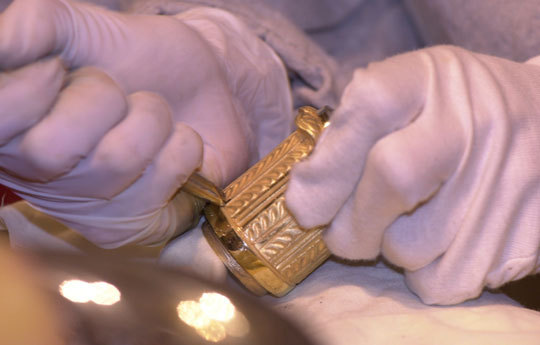
Many Italians visit their local silversmith when they become engaged to be married or when they want to have their grandparents’ silver restored, knowing their beloved heirlooms stand in good hands. International travelers, on the other hand, may not think of selecting a hand-wrought bronze doorknocker or a silver candelabrum as a souvenir from Italy. Makers of fine bronze, silver, copper, and gold objects go unjustly overlooked, when the truth is that Italian metalsmiths are some of the most accomplished in the world. These masters know how to raise a simple, everyday object like a doorknob, a spoon, or a teapot to a work of timeless beauty and quality. And the subject of Italian jewelry, a special subcategory of metalworking, is so rich that it deserves attention in a separate article altogether.
Ancient origins
Metalsmiths have mined and worked bronze, silver, iron, and other metals on the Italian peninsula since ancient times. Over the course of the late Middle Ages and the Renaissance, metalworking became important to interior decoration, used to craft door locks and trims, drawer pulls, and window dressings. A visit to the Silver Museum (the Museo degli Argenti) at the Pitti Palace in Florence bears witness to the technical excellence of which Florentine metalsmiths were capable at that time. It is impossible to convey in words the intricacy, opulence, and technical mastery of metalworking represented by this fascinating private collection of the Medici family. The large holding of vases, implements, tableware, and ceremonial objects made of bronze, gold, silver, and semiprecious stones is staggering, a feast for the eyes.
Techniques
Italian metalsmithing encompasses a wide variety of techniques and refinements. Hammered metal involves using various tools to shape an ingot—a block of metal—into the desired shape. In the technique of raising, a silversmith hammers a flat sheet of silver over an iron bar to create a hollow vessel. Beyond this basic method stands a long list of specialized techniques to add handles and spouts, decorate the piece with surface effects such as repoussé or chasing, or even guild the entire surface to give an impression of solid gold.

Silver, bronze, and gold may also be cast using the lost-wax process, a technique that has remained essentially unchanged since ancient times. The lost wax process requires extensive experience with wax, pottery, and metal. The metalsmith begins with crafting a wax model that is an exact representation of the final piece including any intricate details. A layer of clay is spread over the model. When fired, the wax melts, leaving a ceramic mold that becomes a vessel for molten metal. After the metal cools, the artisan breaks the mold, revealing the metal piece beneath. This basic technique might include many refinements. For example, to create a hollow bronze object requires creating two nested ceramic pieces with a small channel between for the wax. Complex or ornate objects like chandeliers may be composed of many pieces later fused together.
Visiting metalsmiths’ workshops
Today Italy is home to many excellent metalsmithing workshops, often counting multiple generations of expertise as well as molds, patterns, tools, and prototypes passed down from parents to children. Most of these fine craftspeople are accustomed to working on commission and can design something one-of-a-kind for you, whether door handles, frames, clocks, candlesticks, and tableware. The intrinsic value of the natural materials paired with the skills involved in working them makes these masterpieces of metal among the most special of Italian craftsmanship.
Have you discovered any treasures of metalwork in your travels? Drop a comment below. I love to hear your stories!
 .fusion-fullwidth-1 {
.fusion-fullwidth-1 {
padding-left: 0px !important;
padding-right: 0px !important;
}  Join me!
Join me!
.fusion-button.button-1 .fusion-button-text, .fusion-button.button-1 i {color:#ffffff;}.fusion-button.button-1 {border-width:0px;border-color:#ffffff;}.fusion-button.button-1 .fusion-button-icon-divider{border-color:#ffffff;}.fusion-button.button-1:hover .fusion-button-text, .fusion-button.button-1:hover i,.fusion-button.button-1:focus .fusion-button-text, .fusion-button.button-1:focus i,.fusion-button.button-1:active .fusion-button-text, .fusion-button.button-1:active{color:#000000;}.fusion-button.button-1:hover, .fusion-button.button-1:focus, .fusion-button.button-1:active{border-width:0px;border-color:#000000;}.fusion-button.button-1:hover .fusion-button-icon-divider, .fusion-button.button-1:hover .fusion-button-icon-divider, .fusion-button.button-1:active .fusion-button-icon-divider{border-color:#000000;}.fusion-button.button-1{background: #dd9933;
background-image: -webkit-gradient( linear, left bottom, left top, from( #c97800 ), to( #dd9933 ) );
background-image: -webkit-linear-gradient( bottom, #c97800, #dd9933 );
background-image: -moz-linear-gradient( bottom, #c97800, #dd9933 );
background-image: -o-linear-gradient( bottom, #c97800, #dd9933 );
background-image: linear-gradient( to top, #c97800, #dd9933 );}.fusion-button.button-1:hover,.button-1:focus,.fusion-button.button-1:active{background: #c97800;
background-image: -webkit-gradient( linear, left bottom, left top, from( #dd9933 ), to( #c97800 ) );
background-image: -webkit-linear-gradient( bottom, #dd9933, #c97800 );
background-image: -moz-linear-gradient( bottom, #dd9933, #c97800 );
background-image: -o-linear-gradient( bottom, #dd9933, #c97800 );
background-image: linear-gradient( to top, #dd9933, #c97800 );}.fusion-button.button-1{width:auto;}GET MY FREE BOOK.fusion-fullwidth-2 {
padding-left: 20px !important;
padding-right: 20px !important;
}Explore my books:




The post Italian Metalsmiths: Bronze, Silver, Copper, Gold appeared first on Laura Morelli: Art History, Art Historical Fiction, Authentic Travel.
June 6, 2016
The Gondola Maker debuts in Hungarian!
The first translated edition of my historical novel, The Gondola Maker, will hit the shelves next month–in Hungary! Working with my Hungarian agent has been a fortuitous and wonderful process.
The book is being published by IPC Konyvek Kft., an imprint of Nouvion Trade Sociedad Anonima. It’s the same publisher that has brought authors like Michael Crichton, Clive Cussler, Colin Falconer, George R. R. Martin, and others to a Hungarian-speaking audience. Very exciting!
Here’s what the hardcover jacket looks like for the English-speaking market…
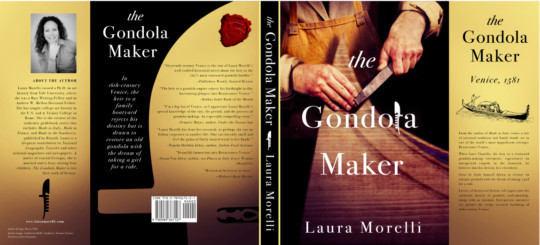
And now for the Hungarian one…
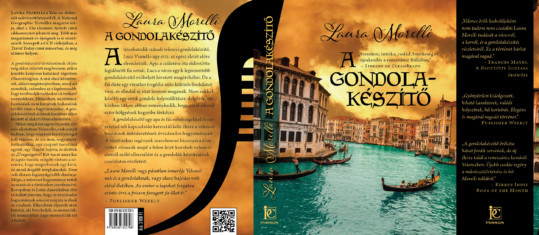
Wow! I sure wish I knew how to pronounce gondolakészítő! If any of you know what it sounds like, please let me know!
Click here to read more about The Gondola Maker.
Do you know how the heck to pronounce gondolakészítő or have any other thoughts? Comment below! I love to hear from you.
I am so grateful for your support, friends. Thanks!

The post The Gondola Maker debuts in Hungarian! appeared first on Laura Morelli: Art History, Art Historical Fiction, Authentic Travel.
May 29, 2016
And the narrator is…
I had such a fantastic response to my call for help in selecting a narrator to produce the audiobook edition of my historical novel, The Gondola Maker. Many of you took time from your busy schedules to listen to all five auditions I received. Some of you had strong opinions about who would best portray the voice of Luca, the son of the most renowned gondola maker in Renaissance Venice. I am humbled and grateful for the constructive feedback–thank you!
I wanted you to know that I chose Edoardo Campioneschi, a young Italian who has made a name for himself as a professional narrator and stage actor. In case you’re curious, click below for a sample of Edoardo’s narration for The Gondola Maker. I’ve spent the last week or so reviewing the audio chapters, and he’s doing a fantastic job. I can’t wait to share the finished audiobook with you!
Click here to listen to the winning audition.
What do you think? Comment below! I love to hear from you.
I am so grateful for your feedback. Thank you, friends, and buon ascolto (happy listening)!

The post And the narrator is… appeared first on Laura Morelli: Art History, Art Historical Fiction, Authentic Travel.


